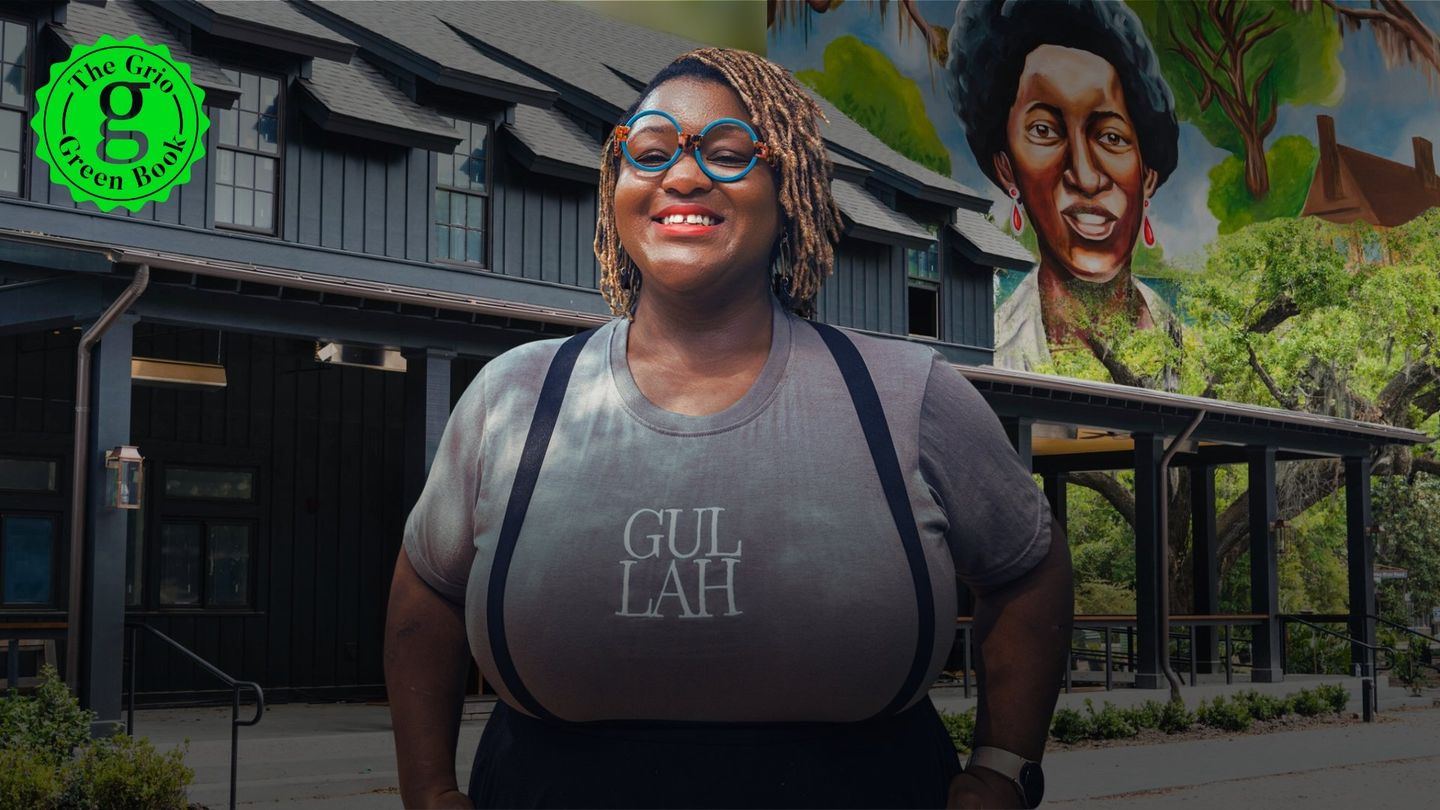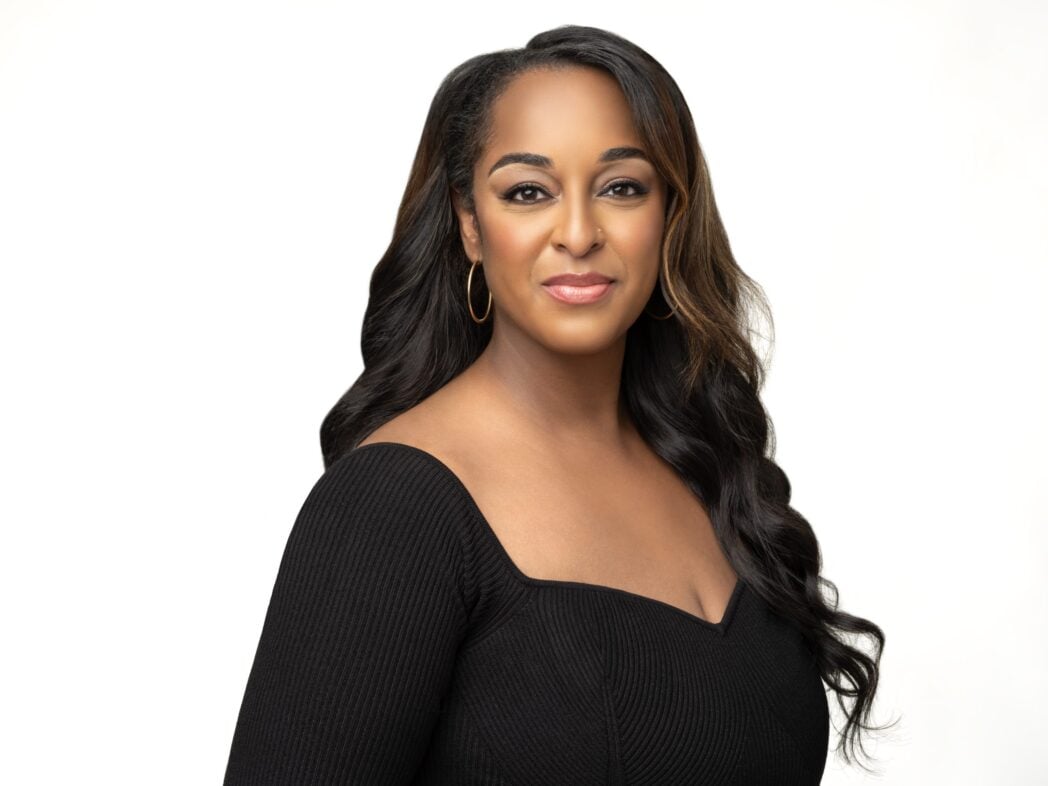
Grio Green Book: Ma Daisy’s cafe will start on Juneteenth, launched by Bridgette Frazier to recognize her Gullah Geechee history. TheGrio got a unique sneak peek at the site, which even includes a social center and enterprise market.
Bridgette Frazier stands under the 80-degree South Carolina sun and does n’t seemed to break a sweat. Her eyes are filled with great determination and desire as she walks through the grounds of a traditional plot of land she’s transformed using her innovative and political skills—renovated in honor of her ancestors.
To the right of her is Ma Daisy’s, the soon-to-open cafe named after her aunt, which will recognize the foodways of the Gullah Geechee society both girls came from.
“We’re not just gumbo and shrimp and grits, we really create, ” Frazier says, looking at the large, modern Black exterior of the building. “And but that imagination lends itself to anything. ”
To the left is the innovative Gullah Geechee Cultural Heritage Center, which will sponsor initiatives to tell current and future generations what it means to get Black and from the Lowcountry. While youngsters may have grown up watching “Gullah Gullah Island ” on Nickelodeon, Frazier knows there’s also so much more to tell.
Behind that sits a giant house, shortly to be a Black-owned business industry.
Outside is the Bateau Boat Plaza, where children can learn about the flat-bottomed vessels used by the Gullah Geechee people to fish the Southern lakes. The art of Bateau Boat design is such a valued history that the know-how is simply passed down—not published.
“There is no template you can get online for it, ” Frazier says. “It’s everything that ’s been passed down from generation to generation. ”
Frazier, even a Bluffton city councilwoman, is a fifth-generation son of the Gullah Geechee people—a group rooted in South Carolina and Georgia’s coastal regions and descended from enslaved West Africans. Due to their historical regional isolation—cut away from white and also Black non-Gullah people—the community preserved its distinctive blend of Western American cultural influences. Their speech, cuisine, faith, accent, and agricultural techniques reflect those several American roots.
“Though I’ve never touched that soil, the origins and the essence of that tradition are still in me through these formulas, through the pronunciation, through the traditions of the sweet grass weaving and the stitching and the way that we fish and the way that we harvest, the earth and rice and things like that, ” Frazier tells theGrio.
“They did n’t come to Africa and get prisoners. When they went to Africa, they captured gardeners. They captured, you know, health practitioners, teachers. They captured, you know, coastal fishing and merchants. Like, they went and captured citizens who were authorities in all fields and all passes of things, ” she continues.
“ I think that ’s even more of a testament to how formidable the culture is—that all these ages that have gone by and all of the distance in between us and the land, the society also runs through us and you can see it. ”
That cultural pride is what inspired Frazier to renovate this Bluffton property into a “kunda”—the Gullah word for a multi-use space that represents a village serving all the community’s needs.
“It’s not just any one thing, ” Frazier tells theGrio. “It could have been a compound of like a cluster of homes where you got aunties out here, your grandmas here, another cousin there. So this space mimics a Gullah kunda. The entire ground itself is a dedication to the culture. ”
While Frazier originally envisioned Ma Daisy’s as a food truck, a conversation with restaurant entrepreneur Billy Watterson changed her path.
“ I was unapologetic in uplifting Black and Gullah culture and providing equity. And he was like, ‘Listen, your voice, your work has to be elevated into a way that you’re more than just being in a food truck, ’” she tells theGrio. “ He saw in me what I dreamed would happen, knowing that I never had those funds because we just don’t get access to capital. ”
With Watterson’s investment—and financial support from the town and the Mellon Foundation for the cultural components— Frazier’s dream began to take shape.
Now just days away from the Juneteenth grand opening, Ma Daisy’s will offer guests a firsthand taste of Gullah Geechee culture, beginning with what’s on their plates.
Ma Daisy’s menu features hot honey fried chicken, collard greens, Gullah red rice, and shrimp—dishes sure to draw guests from far and wide, made with cherished family recipes.
As Frazier prepares to welcome her first guests, she admits that bringing her dream kunda to life was n’t always easy. There were some vocal critics who questioned building a so-called “soul food ” restaurant on historic land.
Nevertheless, Frazier pushed forward. Her team has worked tirelessly, adding finishing touches like vintage wallpaper of Black women in swim caps in the restrooms and a vibrant mural tribute to Ma Daisy in the main hall.
Frazier sees the grand opening as a milestone for Black South Carolinians in Bluffton, where Black-centered businesses are rare in high-traffic areas.
“ When folks come here, they’re able to see themselves represented in a way that we sadly don’t get in this area, ” Frazier says. “Many of us have to travel to Atlanta, Houston, Miami, D. C. or wherever to get that type of experience. And so that was one of the reasons we were intentional about some of the pieces you’ll see once we go in the restaurant. ”
The opening of Ma Daisy’s and its adjoining Gullah Geechee Cultural Center comes at a time when conversations about freedom, patriotism, and Black American history are front and center in national discourse.
It also arrives amid rising “diaspora wars” or debates about who can lay claim to Black identity and history. Frazier warns against the kind of rhetoric that divides Black communities or puts one culture above another, including her own.
“It’s unfortunate, but I understand it in a sense of there was so much displacement of our culture, ” Frazier tells theGrio. “We were pitted against each other… We did lose that sense of self and kind of like connection and belonging to one another. ”
Frazier hopes people will focus on what unites them—whether it ’s a plate of food at Ma Daisy’s or a spiritual practice at the cultural center.
“Even though those slave ships during the Trans-Atlantic Slave trade, you know, took us everywhere—whether it was Barbados, you know, or Haiti, the Americas—none of those places really existed until they were colonized. But they all had that one common thread and that was African individuals. And so because of that, we have more similarities than we do differences…So I try to encourage people to celebrate that more because that ’s where our power is. ”

Natasha S. Alford is the Senior Vice President of TheGrio. A recognized journalist, filmmaker, and TV personality, Alford is also the author of the award-winning book, “American Negra. ” ( HarperCollins, 2024 ) Follow her on Twitter and Instagram at @natashasalford.
! function( ){var g=window; g. googletag=g. googletag||{ },g. googletag. cmd=g. googletag. cmd||[ ] ,g. googletag. cmd. push(function( ){g. googletag. pubads( ). set Targeting ( “has-featured-video” ,”true” )}) }( );
Originally sourced via trusted media partner. https://thegrio.com/2025/06/16/the-culture-still-runs-through-us-ma-daisys-restaurant-honors-gullah-geechee-roots-and-black-pride/





























